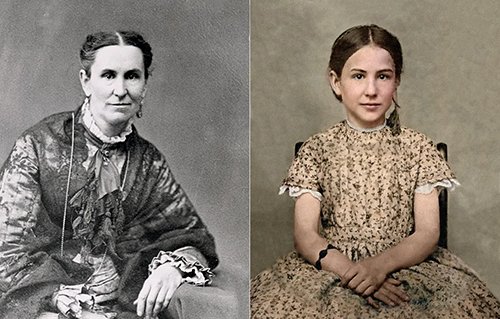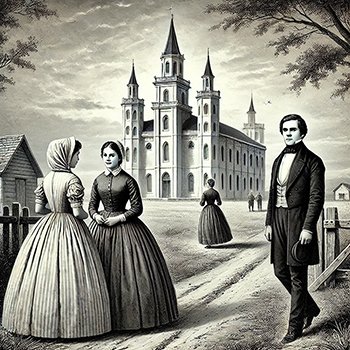
Joseph Smith’s First Vision Was a Lie: The Shocking Truth the Mormon Church Hid for Over a Century
Let’s not mince words: Joseph Smith operated like a textbook cult leader. He was charismatic, authoritarian, and opportunistic. He dictated not only what spiritual truth was, but when and how it changed.
His version of the “truth” conveniently evolved in lockstep with his own authority. When he needed legitimacy, the vision included Jesus. When he wanted exclusivity, it included a divine rejection of all other churches. When his own theology matured to the point of requiring a separate Father and Son, he went back and rewrote history.

How the Mormon Church Programs Its Youth: Control, Shame, and Surveillance Disguised as Faith
he youth programs of the LDS Church—Mutual nights, Road Shows, worthiness interviews, spiritual checklists—were never neutral. They were never simply about fun or faith.
They were a system. A system built to produce conformity, suppress individuality, and reward obedience through staged social rituals disguised as religious devotion.
From the moment a child entered Primary to the moment they were expected to enter the temple or the mission field, they were subject to a rotating cycle of spiritual grooming, community surveillance, and identity control.

Exposed: The Hidden Scandal of Abuse Cover-Ups in the Mormon Church – What They Don’t Want You to Know"
The issue of child sexual abuse within faith-based institutions represents one of the most egregious violations of both legal and moral responsibility. Over the past two decades, The Church of Jesus Christ of Latter-day Saints (LDS Church) has faced increasing allegations of mishandling abuse cases through deliberate concealment, financial settlements, and reliance on legal mechanisms such as clergy-penitent privilege. While the church publicly maintains a “zero-tolerance” policy for abuse, repeated case studies and survivor testimonies suggest a pattern of institutional behavior that prioritizes reputation management over justice for survivors.

"God's Busywork: How the LDS Church Turns Devotion Into Free Labor and Full-Time Surveillance"
This article critically evaluates the practices of The Church of Jesus Christ of Latter-day Saints (LDS Church), focusing on its system of "callings" and structured obligations as mechanisms of behavioral regulation, social surveillance, and organizational control. Using sociological and psychological frameworks, the analysis situates these practices within the broader context of high-demand religious groups.

Exposing the Dark Truth: Why Joseph Smith’s Marriages to Minors Defy Historical and Ethical Defenses
In defending Joseph Smith’s polygamous marriages to fourteen year old children, apologists frequently invoke cultural relativism, historical norms, and theological mandates. They suggest these unions were consistent with societal practices of the time, portraying Smith’s actions as either benign or divinely inspired. However, such arguments fail to withstand scrutiny.

Mormon Apologist Historian Defends Joseph Smith’s Child Brides? Reddit Post Claims It Was ‘Normal’—But Is It True?
Mormon apologists are at it again. A recent post on r/AskHistorians defends Joseph Smith’s marriage to 14-year-old Helen Mar Kimball, claiming it was ‘normal for the time’ and not as scandalous as critics suggest. The post, written by a user u/sowser, provides a detailed argument attempting to justify Smith’s actions using historical norms and cultural relativism

The Book of Mormon: 19th-Century Fanfiction or Divine Bestseller?
Joseph Smith, the founder of the Church of Jesus Christ of Latter-day Saints (LDS), published the Book of Mormon in 1830—a text hailed by believers as divinely inspired scripture and scrutinized by critics as a product of 19th-century storytelling. Smith’s limited formal education, combined with his charisma, narrative skills, and exposure to the cultural ideas of his time, raises the question: Could he have created such a work independently? Let’s explore the evidence.
The Cultural and Intellectual Context

Emma Hale Smith: The Faithful Rebel of Early Mormonism
Emma Hale Smith, wife of Joseph Smith, founder of The Church of Jesus Christ of Latter-day Saints, occupies a complex role in the early history of Mormonism. While her belief in Joseph’s prophetic mission was unwavering, her relationship to his teachings, particularly polygamy, reveals a tension between personal conviction and psychological influence.
This post explores the psychological dynamics of charismatic leadership, cognitive dissonance, and social pressures in Emma’s life, alongside her documented opposition to certain doctrines. Through an analysis of historical accounts and theoretical frameworks, this study highlights Emma’s agency amidst significant cultural and emotional challenges and critiques the limitations of deterministic interpretations of her role.

Joseph Smith Jr.: A Third-Grade Education and the Imaginative Tales That Shaped a Prophet
Joseph Smith Jr.’s early years in Palmyra were marked by both fascination and controversy. His treasure-seeking activities, charismatic storytelling, and interactions with neighbors created a deeply polarized perception of his character.
While some contemporaries regarded him as a clever and imaginative figure with spiritual potential, others dismissed him as a manipulative opportunist. Exploring these contrasting views sheds light on the complexity of Joseph’s reputation and the cultural context in which he lived.

Joseph Smith, the Burned-over District, and the Second Great Awakening: A Nexus of Revivalism, Reform, and Religious Innovation
To fully understand Joseph Smith and the origins of Mormonism, it is essential to examine not only his family life but also the broader social, cultural, and religious milieu in which he lived. Born in 1805 in Sharon, Vermont, Joseph Smith moved with his family to Palmyra, New York, in 1816, when he was just 11 years old.

Family, Faith, and Folk Magic: The Early Influences on Joseph Smith and Mormonism
Joseph Smith Jr., founder of The Church of Jesus Christ of Latter-day Saints (LDS Church), was shaped profoundly by the socio-economic challenges, religious experimentation, and cultural dynamics of early 19th-century America. His formative years were marked by his family’s financial struggles, immersion in folk magic, and participation in the spiritual experimentation that characterized the Burned-over District of New York. To fully grasp the emergence of Mormonism, it is essential to explore these influences in depth, understanding how they converged to inspire Joseph Smith’s prophetic claims and the foundation of a new religious movement.